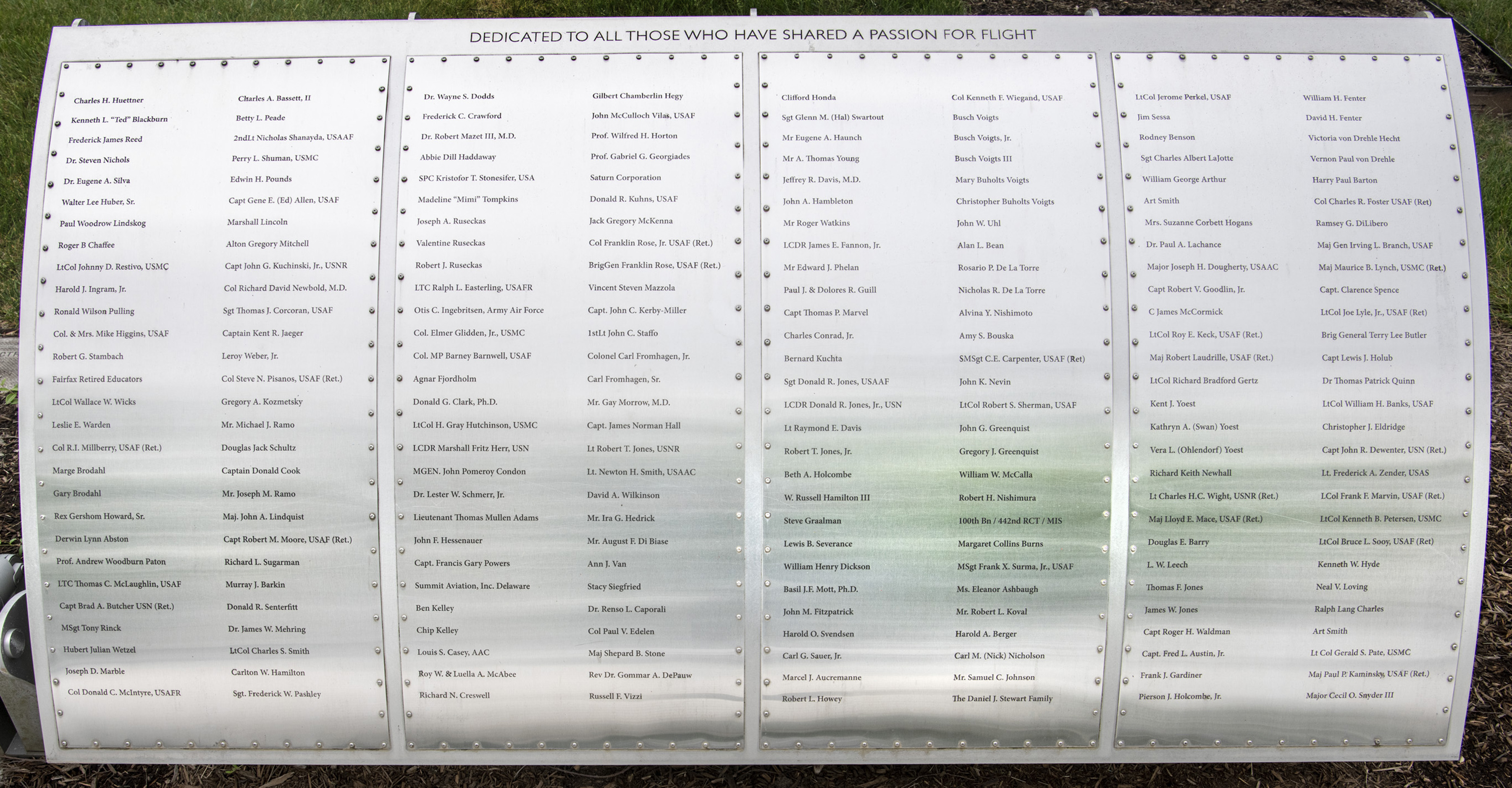
Foil: 24 Panel: 4 Column: 2 Line: 22
Wall of Honor Level:
Air and Space Sponsor
Honored by:
Ms. Beverly Hyde
Ken's passion for aviation came at an early age. His father's interest in aviation was quickly passed on to him. Sunday afternoon family car rides always seemed to end up at the local airport. That passion was fueled by the guidance and encouragement of so many individuals who took an interest in this small town boy from Nokesville. But it was the renowned Charlie Kulp, "The Flying Farmer" who shared with Ken his maintenance skills, technical expertise, and patience for restoring old airplanes.
Born April 26, 1939, the Nokesville, Virginia native earned both his pilot's and mechanics' licenses while still a high school student. Following high school, he went to work as a mechanic for Capital Airlines. In 1961, he joined the team at Bendix Corporation as a co-pilot/mechanic for the operation of instrumented aircraft for calibrating worldwide tracking stations for projects Mercury, Gemini, and Apollo.
He joined American Airlines in 1965 and retired in September 1998, with 33 years of service of flying DC-6's, DC-7's, L-188's, and Boeing 727's. The same year he went to work for American Airlines, he founded Virginia Aviation, an antique aircraft restoration company. He first gained national attention as the restorer of a number of vintage aircraft when his restored Clipped-Wing Monocoupe "Little Butch," took EAA Grand Champion honors in 1975.
He also won EAA grand national-champion honors in 1987 with his 1918 Curtiss Jenny. His list of restored projects for museums include aircraft for the National Air and Space Museum's Garber facility in Silver Hill, Maryland; the Cradle of Aviation Museum; EAA Museum; San Diego Aerospace Museum; U.S. Army Museum at Ft. Rucker, Alabama; U.S. Army Aviation Museum at Ft. Sill; Virginia Aviation Museum in Richmond, Virginia; and the College Park Aviation Museum, College Park, Maryland.
But it was in 1992 that he first turned his attention to the Wright Brothers. The Army Aviation Museum at Fort Rucker, Alabama commissioned Ken to build a reproduction of the 1911 Wright Model "B" that had become the Army's first practical airplane. What he found out was that the meticulous Wrights put very little of their work on paper or in one resource place. Instead, Ken discovered that it would take a full-time commitment to tell the entire story of what these two brothers accomplished.
That commitment has led him and his wife, Beverly, to fully invest themselves to ensure the success of The Wright Experience, Inc. To say they are hands-on is a literal description as each has a hand in the daily operation of The Wright Experience, Inc. Besides managing the entire project, Ken works side-by-side with his team from project beginning to project end. Beverly has become an expert seamstress stitching wing covers for the gliders, kites, and aircraft. Over the past year Ken's team has made great strides towards understanding the secrets of the Wright Brothers. Wind tunnel tests performed on the 1903, 1904, and 1911 propellers have shown that the Wright propellers were exceedingly efficient. Projects that were completed as of 2003 include the construction of a fully accurate, air-worthy 1911 Model "B" aircraft; construction, wind tunnel testing, and documentation for all of the Wright propellers; construction of the 1899 kite and the 1900, 1901, and 1902 gliders; Operation of the Wright Vertical Four engine Serial number 20, the only original working Wright engine in the world. It is their eye for detail and determination to get things right that separates The Wright Experience, Inc. from all others.
It is also why the Wright family has fully endorsed only the Hyde's and The Wright Experience, Inc. "I think (The Wright Experience, Inc.) has made a first-rate contribution to both the history and the scientific appreciation of the Wright Brothers achievements," said Marianne Miller Hudec. "I know the Wright brothers would be particularly gratified by (The Wright Experience's) efforts to prove their scientific creativity."
Indeed, rediscovering the secrets of the Wright Brothers to inspire a new generation is what inspires Ken Hyde and his Wright Experience. Commissioned by the EAA and authorized Ford Motor Company, In 2002-2003 Ken reproduced the Wright's ultimate gift to mankind - the Wright 1903 Flyer - which flew on December 17, 2003 at Kitty Hawk
With the leadership of Ken Hyde and his wife, Beverly, the Wright Experience team includes the only engineers and historians who have the ability, expertise, knowledge, and dedication to detail to build and fly these aircraft for the first time in nearly a century. For The Wright Experience founder Ken Hyde, it matters a great deal. For him it is important that 100 years from now the Wright Brothers' work is preserved for future generations to study and understand what these two remarkable men actually accomplished and how they accomplished it. A 2000 inductee into the Virginia Aviation Hall of Fame, Ken along with his wife Beverly and his Wright Experience team, are telling the story that the Wrights always intended to tell but never did.
Flight experience in fully unstable aircraft
1910 Beachey Little Looper 80 LeRhone powered
1916 Nieuport 24 bis 110 LeRhone powered
1917 Fokker DIII Triplane 145 Warner powered
1918 Curtiss JN4D OX5 powered
Wall of Honor profiles are provided by the honoree or the donor who added their name to the Wall of Honor. The Museum cannot validate all facts contained in the profiles.
Foil: 24
All foil images coming soon.View other foils on our Wall of Honor Flickr Gallery
